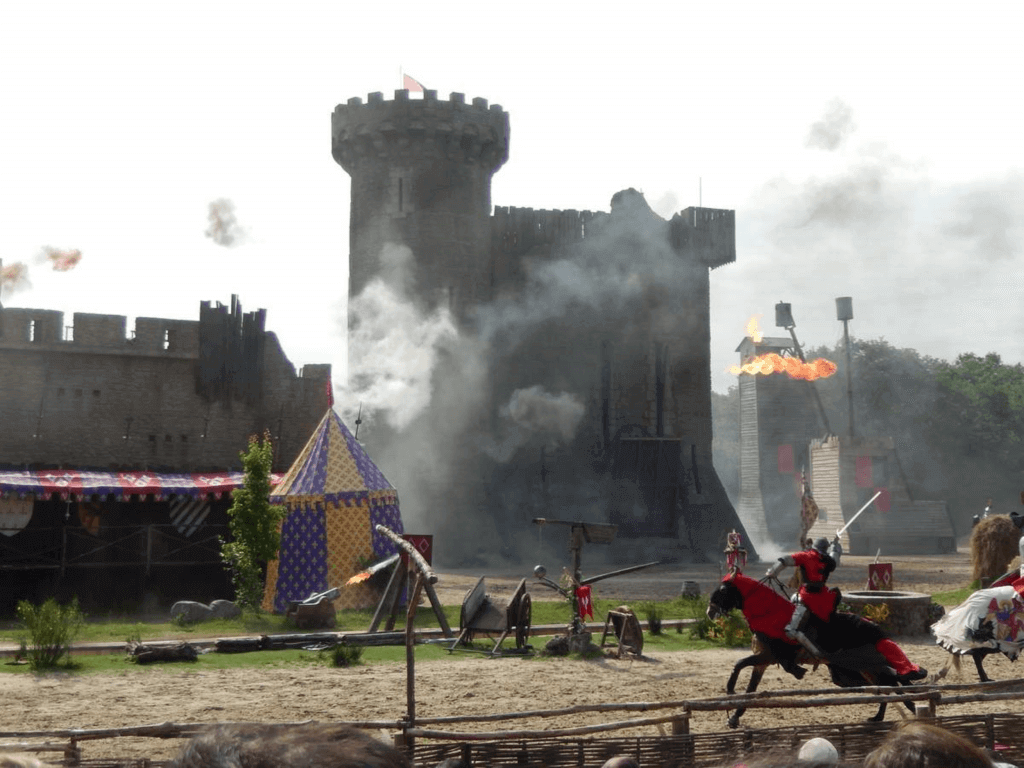End of the Middle Ages Day
End of the Middle Ages Day is observed next on Friday, May 29th, 2026 (175 days from today).

The 29th of May is End of the Middle Ages Day to mark the day that Constantinople fell to the Ottomans on the 29th of May, 1453.
History of End of the Middle Ages Day
Many historians consider May 29th, 1453 to be the end of the Middle Ages. On this day, Constantinople, the capital of the Byzantine Empire, fell to the Ottoman Empire, after being besieged for almost two months. With the fall of the capital, the Byzantine Empire also ended. After the fall, Byzantine scholars left Constantinople and Greek culture began to be studied outside of the region of the old empire. Learning based on classical Greek sources was revived and it helped bring about the Renaissance.
The Middle Ages, sometimes was also known as the Dark Ages or the Middle Ages in Europe with the fall of Rome in 476 AD. Some historians suggest that the Renaissance began in the 14th century, but it was prompted by the fall of the Byzantine Empire and Constantinople, so May 29th, 1453, is also considered the equinox divided into two eras. During the Renaissance, the art and culture of ancient Greece and Rome was looked back upon and celebrated by writers, artists, and thinkers. They consider the time after the fall of Rome to be the "medieval" or "dark" period because they consider it to be a period without great scientific achievements, art, or great leaders. They look at it poorly and think people haven't used their full potential in the process. In recent years, times have been viewed more favorably.
The most powerful institution in the Middle Ages was the Catholic Church, not kings or queens. Large churches were built in the Romanesque style, and later in the Gothic style, and monasteries were also built. The Muslim world also flourished during this time, and cultural and intellectual life flourished in cities such as Cairo, Baghdad, and Damascus. There were written thousands of books and some important ones were translated into Arabic.
At the end of the 11th century, the Catholic Church began to allow military expeditions: the Crusades began in 1095 and were an attempt to remove Muslim "pagans" from the Holy Land. They continued periodically until the end of the 15th century, and many people on both sides perished. During this time, religious fervor grew, and literature, science, and technology from the Muslim world influenced the lives of Europeans. Trade routes were also expanded by the Crusades, and Europe was given access to imported goods such as wine, olive oil, and textiles.
One of the key moments of the Middle Ages was the plague. Also known as the Black Death, it killed an estimated 20 million people - 30% of Europe's population - between 1347 and 1350. This was the worst time in the cities, where it easily easily transmitted from one person to another.
Feudalism dominated the countryside throughout the Middle Ages. Kings gave large tracts of land called fiefdoms to nobles and bishops, and landless farmers, known as serfs, did most of the work on the fiefs. Slaves were able to live on the land and secure protection. Agriculture became more productive and efficient in the eleventh century due to innovations, so less labor was needed to produce food. The result of this is an increase in population and the movement of more people to towns and cities. Then the port cities began to thrive on trade, and they experienced a "rebirth", at the forefront of the Renaissance.
The fall of Constantinople was occurred in 1453. In the 12th century, there were about 400,000 inhabitants in the city. Due to several sieges, its population was reduced to between 40,000 and 50,000 by the 1450s. Byzantine power was also in decline at that time, following wars with the Catholic Church and countries.
By the second half of the fourteenth century, the Ottoman Turks controlled most of the Balkans and Anatolia. In 1452, the Ottoman leader Sultan Mehmed II Fatih made peace treaties with Hungary and Venice and began building a fortress at the Bosporus, the Turkish strait at the Black Sea and the Sea of Marmara, so that he could limit restricting travel between the Black Sea and the Mediterranean. Mehmed then requested cannons from Urban, a Hungarian gunsmith. They were brought to Edirne, the Ottoman capital, not too far from Constantinople, in March 1853. The following month, after the Byzantine settlements on the Black Sea and Marmara Seas had been taken over; the cannons were taken out of the city. Ottoman regiments came from Rumelia and Anatolia, and their fleet from Gallipoli landed at Diplokionion. At the same time, Byzantine Emperor Constantine XI Palaeogus asked for help. Although some asked to decline, support came from Venice and Genoa.
Besieged by both land and sea, Constantinople was besieged for more than 50 days, with the city's walls facing constant cannon fire. The walls have a row of double ramparts with moats outside of them. The taller wall is 40 feet high with a base up to 16 feet wide. There is also a 20-foot-high sea wall passing through the Golden Horn and the Sea of Marmara, designed to thwart a naval attack. Constantinople had only from 6,000 to 7,000 trained soldiers in spite of having from 30,000 to 35,000 armed civilians. They also only have a small fleet in the Golden Horn. In contrast, the Ottoman army had between 60,000 and 80,000 ground troops and 69 cannons. They also have 31 large and medium warships and 100 smaller boats and transports at Diplokionion.
On April 6th, shelling began. The city was finally besieged. In the weeks that followed, cannons broke through the walls at points, but the holes were not large enough to pass through, and the Byzantines continued to repair them at night. Early in the morning of May 29, the Ottomans began their artillery, infantry, and naval assault on the city. They tried to rush to the Gate of St. Romanus and the walls in the Blachernae area - two areas that had been damaged in previous barges but they discovered resistance and had to back down. After another attack on the gate, its inner wall was taken over.
Fighters arriving from Genoa and Venice to support the Byzantines withdrew to the ships at the Golden Horn. After defending the city, Mehmed came to the Hagia Sophia, the largest church in Christendom, and converted it into a mosque: Ayasofya. Later, Mehmed II moved his capital to the city from Edirne, and the city became inhabited by people of many backgrounds and beliefs. The Greeks left for Italy, which many historians say marked the end of the Middle Ages and the beginning of the Renaissance. Therefore, we consider May 29th as the End of the Middle Ages.
Celebrating End of the Middle Ages Day
- Read a book about the Middle Ages, or the fall of Constantinople that is very interesting.
- Visit Constantinople. Some places you can stop by include the Hagia Sophia Museum or the Holy Romanus Gate.
- You can make a dish that dates back to the Middle Ages.
- Some have suggested that the day is used for gift giving, so that could be done as well.
Observed
End of the Middle Ages Day has been observed annually on May 29th.Dates
Wednesday, May 29th, 2024
Thursday, May 29th, 2025
Friday, May 29th, 2026
Saturday, May 29th, 2027
Monday, May 29th, 2028


